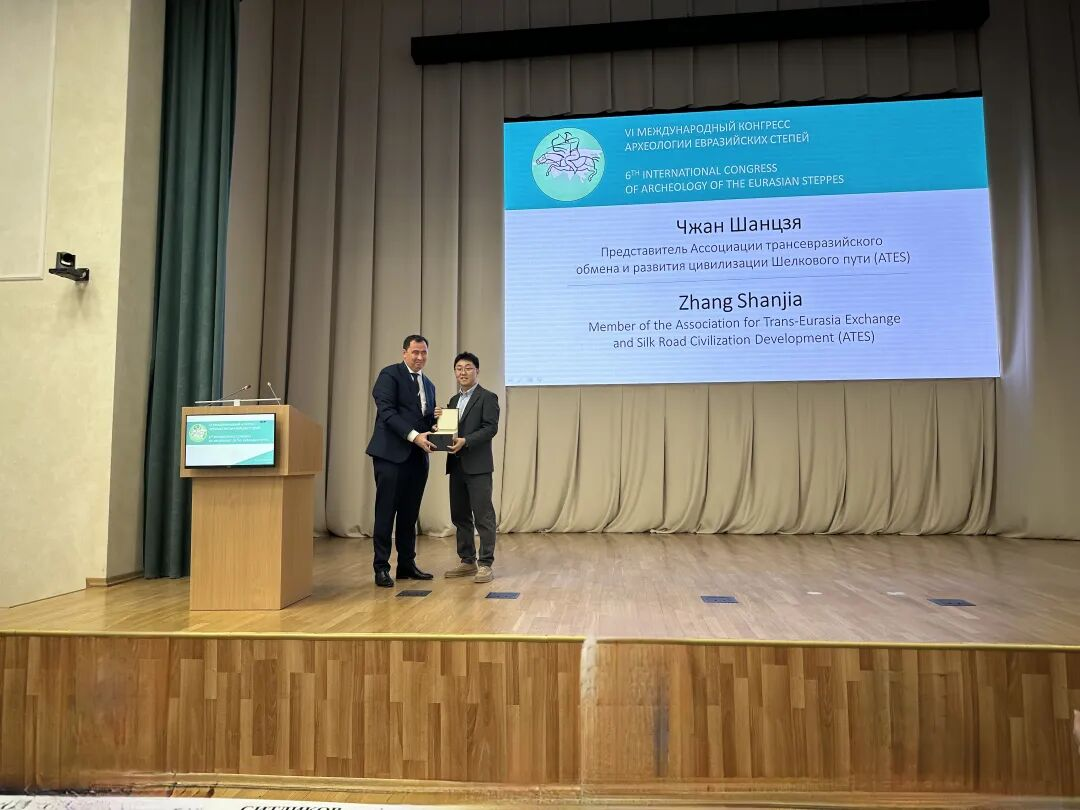
ATES scientists participated in “The 6th International Congress of Archaeology of the Eurasian Steppes” held from 29 October to 1 November 2024 in Kazan, Russia. The congress was organised by the Institute of Archaeology of the Tatarstan Academy of Sciences. The event attracted over 120 scholars from nine countries, including Azerbaijan, Bulgaria, Kazakhstan, China, Kyrgyzstan, Mongolia, Romania, Turkey, Uzbekistan, and Russia, featuring more than 110 presentations across six sessions.
A group of ATES scientists attended the congress on site, including Professor N. Gangbat from the Institute of International Studies of the Mongolian Academy of Sciences, Associate Professor CHEN Wei, Assistant Professor WANG Haolin from the Institute for the History of Natural Sciences at the Chinese Academy of Sciences (WG 4: Silk Road Science and Technology Exchange), and Dr. ZHANG Shanjia, a Young Research Fellow at Lanzhou University (WG2: Trans-Eurasia Exchange of Early Farming and Herding). Dr. ZHANG Shanjia delivered an opening speech on behalf of ATES, highlighting the scientific background and recent advancements of the initiative. Additionally, Dr. CHEN Wei presented a plenary keynote talk focusing on the supporting skills in the Mongolia-Xinjiang region, drawing insights from O. Lattimore’s travel notes.
On the following day, Prof. CHEN Fahu, Co-Chair of ATES, delivered an online presentation titled “Environmental Changes and Trans-Eurasian Exchange”; Prof. DONG Guanghui (WG2) presented an online talk on “Dispersal of Crop-livestock and Geographical-temporal Variation of Subsistence along the Steppe and Silk Roads across Eurasia in Prehistory”; Professor N. Ganbat shared insights from the excavation of the Baibarik site in Mongolia, while Dr. WANG Haolin discussed the conservation practices related to traditional Chinese architectural craftsmanship.
After the congress, the attendees visited the archaeological site and museum in Bolgar, which is located on the south bank of the Volga River at its junction with the Kama River. This site existed between the 7th and 15th centuries AD and served as the first capital of the Golden Horde during the 13th century. As a designated World Heritage site, the Bolgar represents centuries of historical and cultural exchanges and transformations across Eurasia, playing a key role to the development of civilisations, customs and cultural traditions.
The ATES scientists, along with other scholars, participated in extensive discussions that delved into the historical context of ancient nomadic populations and urban sites across the European steppes. These collaborative efforts not only enhanced their understanding of trans-Eurasian cultural exchanges but also promoted the visibility of ATES within the broader network of Eurasian steppe researchers. Furthermore, initial agreements were established to explore opportunities for future collaborations.